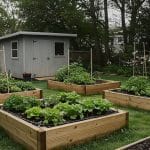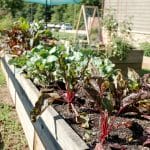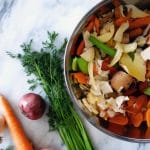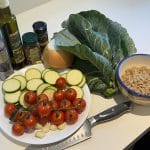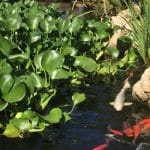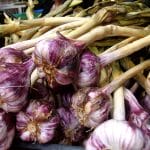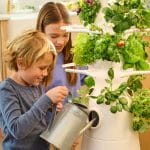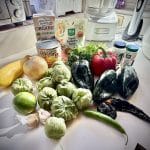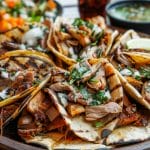Beginner’s Guide to Harvesting and Saving Seeds
Seeds
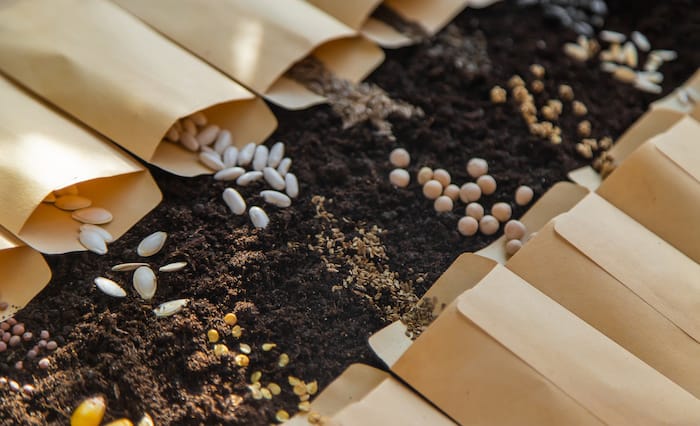
The Art and Quirks of Saving Seeds
I have always viewed seed saving as a method to protect the fundamental nature of summer. You store a small section of your garden, and after several months, you will find new growth emerging in your hands. The basic idea appears straightforward, yet each plant species shows distinct behavior when it comes to seed dispersal. Some are generous, some are stubborn, and a few will flat-out test your patience.
I’ve saved seeds from the easy ones (beans and basil), the tricky ones (tomatoes, roses), and the ones you should handle with care (looking at you, sagos). Along the way, I’ve learned a few lessons worth passing on.
The Easy Ones: Dry Seeders
Beans, peas, lettuce, sunflowers — these are the seed savers’ training wheels. Let pods or flower heads dry until they’re crisp, then pop or shake out the seeds. Too soon and they won’t sprout. Too late, and the birds or the wind will scatter them for you.
A paper bag is your best friend here. Snip the pods, drop them in, and let them finish drying somewhere out of reach of mice. (Ask me how I know.)
The Messy Ones: Wet Seeders
Tomatoes, cucumbers, squash, peppers, melons — you’ve got to get a little sticky with these. Scoop the seeds, rinse off the pulp, and spread them to dry.
Tomatoes need a special step: a two-day fermentation bath to dissolve the slimy coat that clings to each seed. It works, but I’ll warn you — it smells like a science project gone wrong. Stick with it. Clean seeds store better and sprout stronger.
Herbs and Flowers: Tiny but Mighty
Basil, dill, marigolds, zinnias — easy to collect, sometimes comically small. Snip the seed heads when they start to brown, drop them into a bag, and let them dry. Some, like poppies, resemble pepper dust more than seeds. Handle with care unless you want your whole desk sprinkled with future flowers.
The Oddballs: Palms, Sagos, and Roses
Palms ripen their fruits, which fall when they are ready. Strip off the fleshy pulp (gloves are bright — some can irritate skin). Unlike beans or tomatoes, palm seeds don’t sit around well. Plant them fresh or lose them.
Sagos (cycads) are a whole other story. Female plants make big cones filled with bright orange or red seeds. They’re striking, but here’s the catch: they’re highly toxic to pets. Even one seed can be fatal to a dog. Always wear gloves, and keep them far, far out of reach. These need cleaning, too — scrub off the outer layer before drying.
Roses produce hips after blooming, which turn red or orange when ripe. Slice them open, scoop out the seeds, rinse off the goo, and then store them in the fridge for a couple of months. That cold “stratification” tricks them into thinking they’ve survived winter. When they sprout, it’s a bit of a lottery — you might get a stunning new rose, or something that looks like it barely tried.
Do Seeds Always Need Cleaning?
If there’s pulp, yes — or you’ll just be storing mold. That goes for tomatoes, melons, palms, sagos, and roses.
Suppose they dry naturally in pods or heads (such as beans, dill, or peas), not as much. A little chaff won’t hurt, but clean seeds last longer.
How Long Do Seeds Last?
Seeds aren’t forever, but some hang on longer than others:
- Onions, parsley, corn → 1–2 years
- Beans, peas, carrots, peppers → 3–4 years
- Tomatoes, squash, melons → 5+ years
- Palms, sagos, citrus → best planted fresh
Cool, dark, and dry is the winning combo. A sealed jar in the basement or fridge beats the kitchen drawer every time.
Heirlooms, Hybrids, and That GMO Question
- Heirlooms: Old, open-pollinated varieties passed down for decades. Save the seed, and you’ll get the same plant next year. They often come with stories, quirks, and flavors you can’t buy at the store.
- Hybrids (F1): Crosses bred for strength. Great for one season, but their seeds won’t “grow true.” You might get a surprise, but don’t count on consistency.
- Non-GMO: Home gardeners don’t need to stress about GMO seeds — they aren’t available in garden centers or seed catalogs. What you’ll find are either heirlooms (open-pollinated and easy to save year after year) or hybrids (first-generation crosses bred for vigor). Both fall under the non-GMO umbrella and are safe for backyard growing. The “Non-GMO” stamp you sometimes see on packets is primarily marketing reassurance, since GMO seed is limited to large-scale farming crops like corn, soybeans, and canola — not your tomatoes, beans, or zinnias.

Quick Comparison: Seed Types for Home Gardeners
Open-Pollinated 🌼
What It Means: Plants pollinated naturally (wind, insects, or self-pollination) without controlled crosses.
Can You Save Seeds? ✅ Yes, they’ll usually grow true to type.
Pros: Reliable for seed saving, good genetic diversity.
Cons: Can cross with nearby varieties, leading to surprises.
Heirloom 🌱
What It Means: Old, open-pollinated varieties passed down for decades.
Can You Save Seeds? ✅ Yes, they grow true year after year.
Pros: Great flavor, unique varieties, seed-saving friendly.
Cons: Sometimes less disease resistance, can be quirky.
Hybrid (F1) ⚡
What It Means: A cross of two varieties bred for vigor.
Can You Save Seeds? ⚠️ You can, but results are unpredictable.
Pros: Vigorous first-generation plants, often more uniform.
Cons: Seeds usually won’t grow the same next year.
Organic Seeds 🌿
What It Means: Produced under certified organic farming methods, without synthetic chemicals.
Can You Save Seeds? ✅ Yes, if heirloom or open-pollinated.
Pros: Grown in eco-friendly conditions, safe for organic gardens.
Cons: Sometimes pricier, limited variety compared to conventional packets.
Store-Bought Packets 🛒
What It Means: Either heirloom or hybrid, depending on label.
Can You Save Seeds? Depends — check if heirloom or hybrid.
Pros: Convenient, tested, and ready to go.
Cons: Costs add up if you have to repurchase every year.
GMO 🧬
What It Means: Seeds genetically modified in a lab, sold only to large-scale farms under contracts.
Can You Save Seeds? ❌ Not relevant — not sold to home gardeners.
Pros: Used in agriculture for pest resistance and yield improvements.
Cons: Not available to backyard growers. Pollen drift can affect nearby farms, raising cross-contamination concerns.
Seed Swaps and Sharing
Here’s the part I love most about saving seeds: you don’t have to keep them all to yourself. Gardeners have been swapping seeds for centuries, long before seed catalogs and online orders. It’s like trading recipes — only instead of a casserole, you’re passing along the chance to grow food or flowers.
- Local swaps: Check your library, farmers’ market, or garden club. Many host seed swap days where you can trade extras.
- Online groups: Plenty of gardeners mail small envelopes across the country. (Just be mindful of any restrictions — some states are picky about shipping certain plants.)
- Neighbors: Honestly, some of my favorite plants started as a handful of seeds pressed into my palm by a neighbor with a grin.
What to Expect and How to Start
- Expect the classics: heirloom tomatoes, pole beans, and sunflowers show up at almost every swap.
- Look for surprises: lemon cucumbers, blue corn, or quirky family beans often pop up.
- Popular picks, such as zinnias, marigolds, and basil, trade quickly because they’re easy crowd-pleasers.
- Don’t be shy about trying the oddballs — sometimes those mystery packets become your new favorite.
- Every swap is different — half the fun is not knowing what you’ll walk away with.
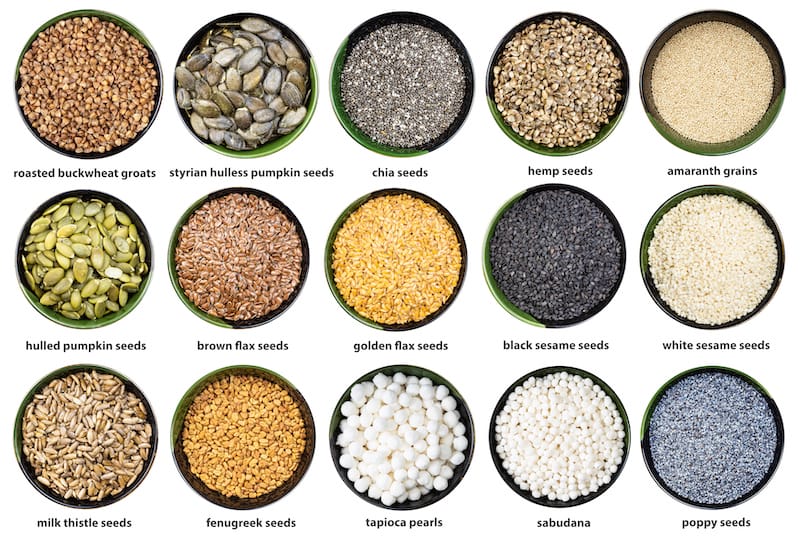
What seeds are most sought after?
- Heirloom tomatoes — everyone wants the flavors you can’t buy in a store.
- Unique beans — pole beans, bush beans, colorful drying beans.
- Cut flowers, such as zinnias, marigolds, and cosmos, are always popular.
- Herbs — such as basil, dill, and cilantro — go fast because they’re easy to grow and always in high demand.
- Oddballs — anything unusual, like purple carrots or climbing squash, tends to draw curious hands.
- Our Master Seed List
Tips for getting started:
- Bring extras of something reliable. Beans, marigolds, and basil are outstanding first contributions. They germinate well, so whoever gets them will have success.
- Package small. A dozen seeds in a labeled envelope is usually enough — most gardeners want variety, not a whole year’s supply.
- Label clearly. Include the variety name, year harvested, and any notes (like “climbs like crazy” or “best flavor fresh”).
- Ask questions. Swaps are part trade, part conversation. You’ll learn which plants thrive locally and which ones frustrate everyone.
Think of seed swaps as potlucks for gardeners. You bring a little of what you’ve got plenty of, and you leave with new flavors, colors, and stories for next season.
FAQ
Do I need to refrigerate seeds?
Not required, but cool storage helps extend seed life.
Why didn’t my saved seeds sprout?
They might have been immature, stored too warm, or simply past their natural viability window.
Can I save hybrid seeds?
You can — but expect surprises. Sometimes good, sometimes not, as hybrids don’t usually grow true to type.
Which seeds are dangerous?
Sago seeds are the big ones for pets. Morning glories, castor beans, and some ornamentals can also be toxic. Always check before handling or storing around kids and animals.
Saving seeds is part thrift, part tradition, part adventure.
Share this post
Table of Contents
- The Art and Quirks of Saving Seeds
- The Easy Ones: Dry Seeders
- The Messy Ones: Wet Seeders
- Herbs and Flowers: Tiny but Mighty
- The Oddballs: Palms, Sagos, and Roses
- Do Seeds Always Need Cleaning?
- How Long Do Seeds Last?
- Heirlooms, Hybrids, and That GMO Question
- Quick Comparison: Seed Types for Home Gardeners
- Open-Pollinated 🌼
- Heirloom 🌱
- Hybrid (F1) ⚡
- Organic Seeds 🌿
- Store-Bought Packets 🛒
- GMO 🧬
- Seed Swaps and Sharing
- What to Expect and How to Start
- What seeds are most sought after?
- FAQ
All categories
More From The Garden
Disclosure: This post may contain affiliate links. That means if you click and buy, The Bright Garden may earn a small commission, at no extra cost to you. We only recommend products we’ve vetted and believe will benefit our readers.

